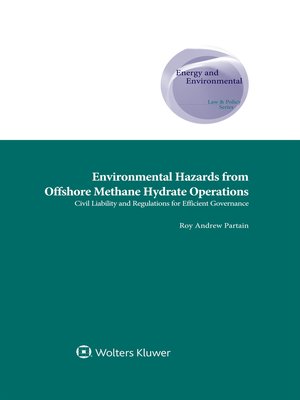Environmental Hazards from Offshore Methane Hydrate Operations
ebook ∣ Civil Liability and Regulations for Efficient Governance
By Roy Andrew Partain

Sign up to save your library
With an OverDrive account, you can save your favorite libraries for at-a-glance information about availability. Find out more about OverDrive accounts.
Find this title in Libby, the library reading app by OverDrive.



Search for a digital library with this title
Title found at these libraries:
| Library Name | Distance |
|---|---|
| Loading... |
Although methane hydrates are not recent discoveries, it is only now that their extraction and production are becoming commercially feasible as a major new energy source. They are present offshore in almost every coastal state, and their economic potential for endowing those states with abundant natural gas – in addition to their utility as freshwater resources and as carbon sinks for captured greenhouse gases – is vast. This book presents the first treatment of the legal issues facing the future of offshore methane hydrates, taking into account both proprietary interests and environmental hazards.
Starting from law and economics theory as applied to environmental accidents, the book's analytical framework addresses how best to provide for the opportunities and challenges presented by offshore methane hydrates. Issues and topics include the following:
The analysis compares and contrasts recommended legal policies with existing legal frameworks in relevant international conventions, the European Union, and the United States. Rules of civil liability are reviewed to determine when strict liability or negligence might be efficiently employed in risk governance along with the implementation of public regulations.
As a road map to amending and revising existing laws and conventions, this book will be of inestimable practical value to policymakers in supporting the optimal risk governance of the development of methane hydrates. For potential entrepreneurs and operators, this book greatly reduces the legal uncertainty underlying their decision-making and investment decisions. Furthermore, this book enables a broad cross-section of legal practitioners and scholars to engage in this fascinating late arrival to the natural resources law and policy arena.
"






